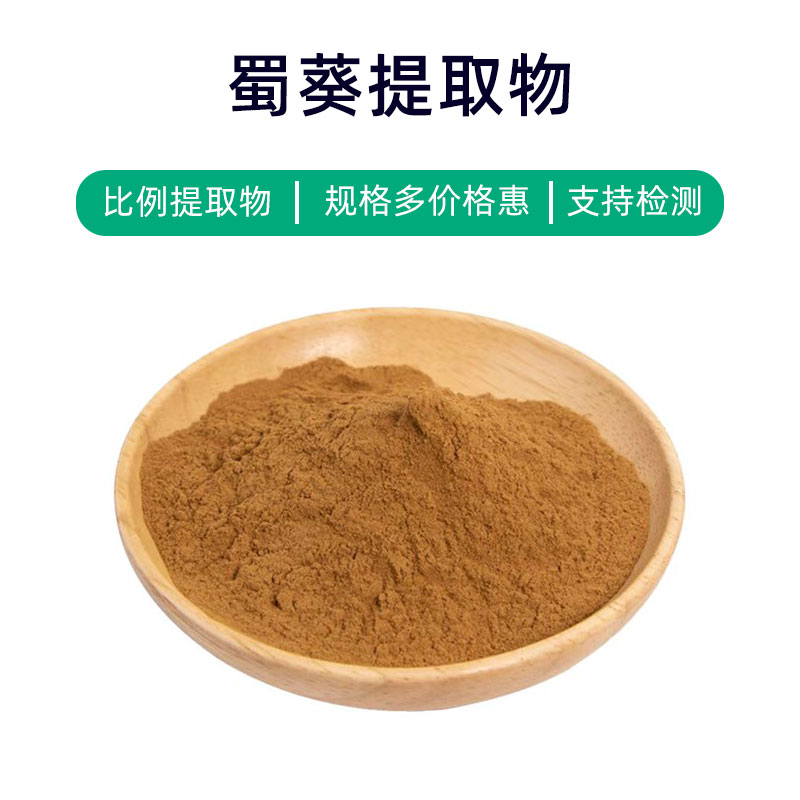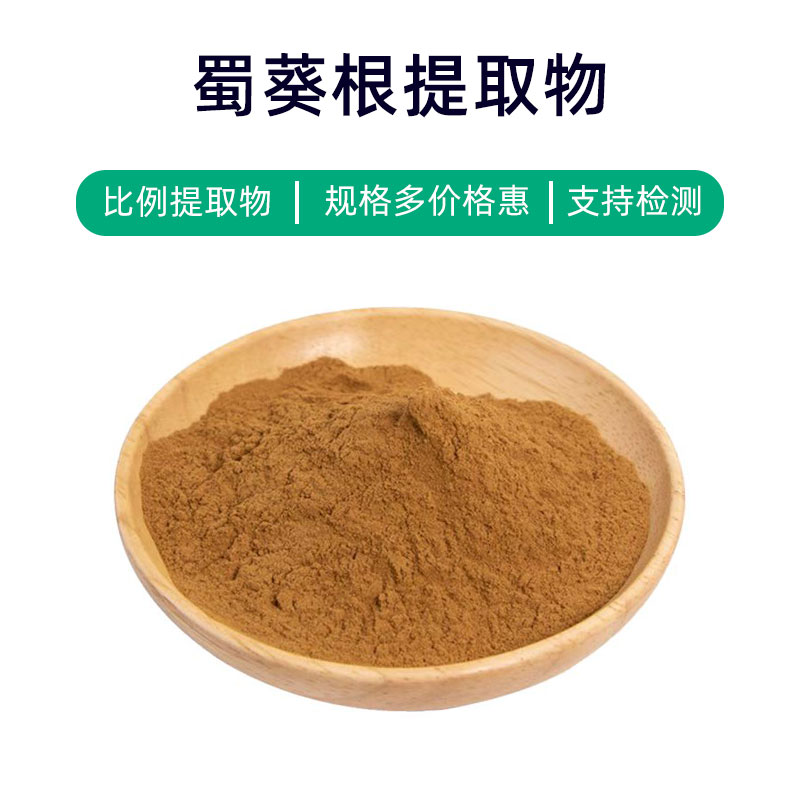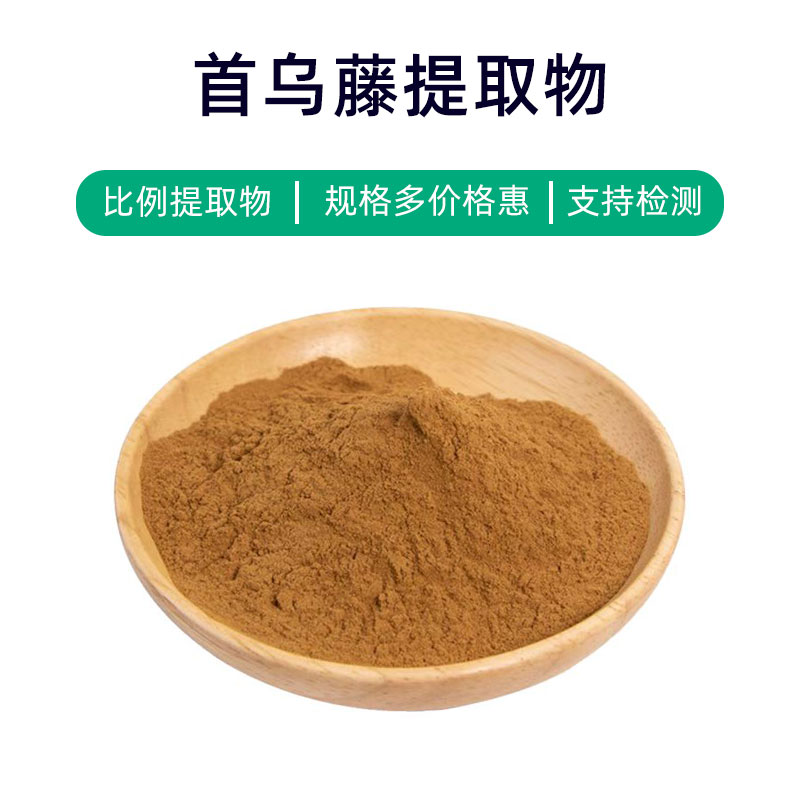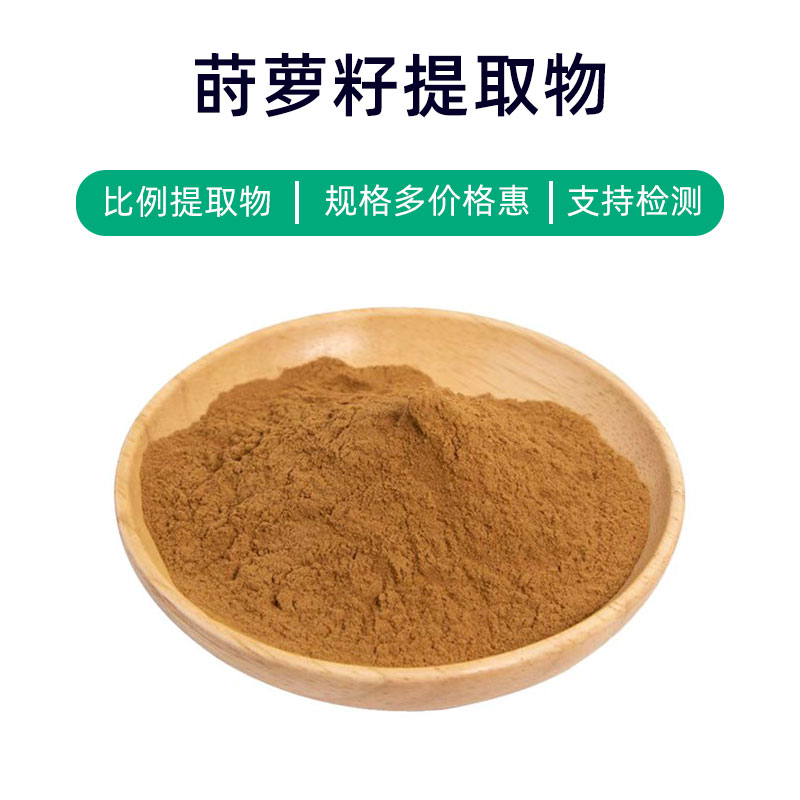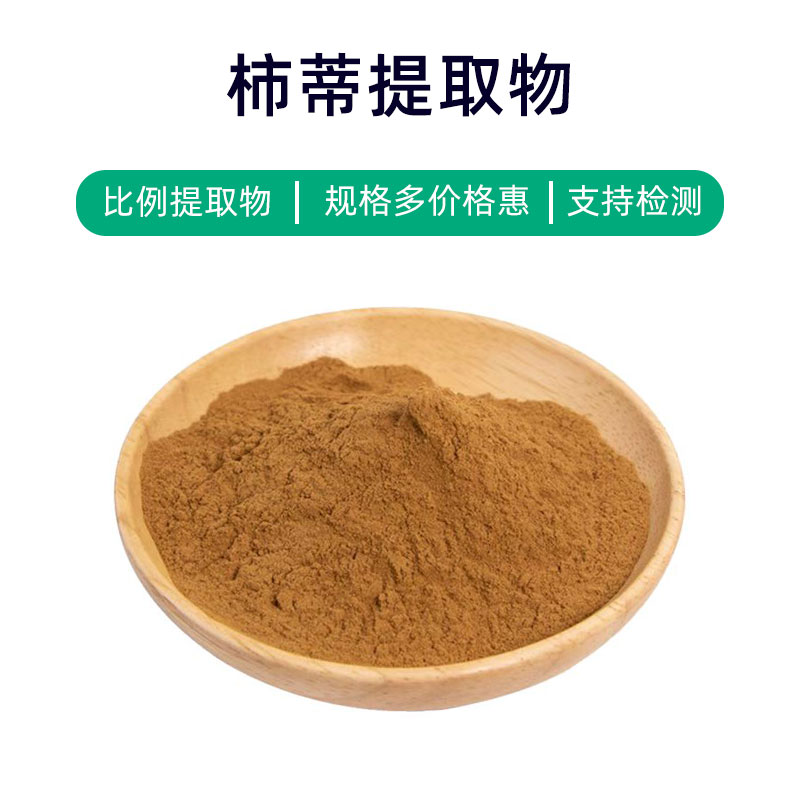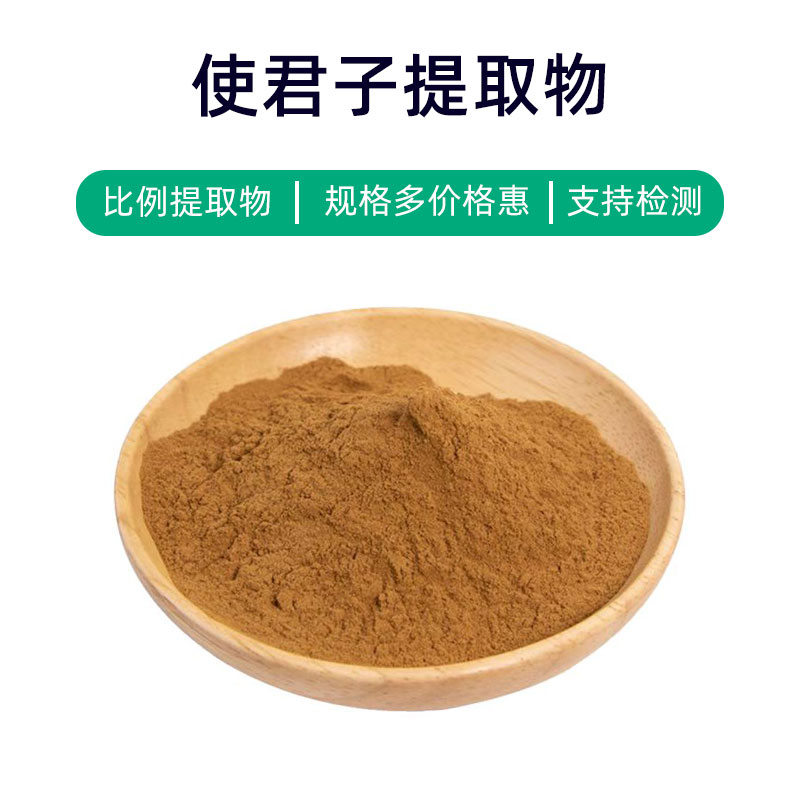Mulberry Extract Product Introduction
Mulberry extract is a natural plant extract derived from the fruit of the mulberry tree, rich in flavonoids, vitamin C, plant phenols, and polysaccharides. These components confer multiple benefits and wide applications.
The flavonoids in mulberry extract possess strong antioxidant properties, helping to eliminate free radicals in the body, slow aging, and boost immunity. Vitamin C is an important antioxidant that promotes collagen synthesis, maintains skin elasticity, fades dark spots, and combats aging. Furthermore, mulberry extract also contains various vitamins and minerals beneficial to health.
Mulberry extract has diverse applications in medicine, dietary supplements, food, and cosmetics. In medicine, it is commonly used for regulating blood sugar, lowering lipids, and enhancing immunity. In dietary supplements, it is often formulated into oral liquids or capsules for daily nutritional support and to boost resistance. In the food industry, mulberry extract can be added to various products such as beverages, pastries, and health foods to enhance nutritional value. In cosmetics, mulberry extract is frequently used in skincare products for its moisturizing, antioxidant, and brightening properties, helping improve skin texture and reduce wrinkles.
Overall, mulberry extract is a natural, safe, multifunctional plant extract with broad application prospects that positively impact human health and beauty.
Mulberry Extract Production Process
The production process for mulberry extract typically includes the following steps:
- Raw Material Preparation: First, fresh and mature mulberries are selected. The fruits should be cleaned to remove impurities and residues.
- Crushing and Extraction: The cleaned mulberries are crushed to increase the surface area. Then, solvents (such as water or ethanol) are used to extract the active components from the fruit.
- Filtration and Concentration: The resulting mixture is filtered to remove solid impurities like fruit residues. Subsequently, methods like evaporation concentration are used to remove the solvent from the extract, resulting in a concentrated extract.
- Precipitation and Separation: The concentrated extract undergoes precipitation to remove some proteins and polysaccharides. The precipitate is then separated from the solution using methods like centrifugation or filtration.
- Refining and Drying: The separated extract is further refined to remove residual impurities, enhancing the product's purity. Finally, it is converted into a powdered form using spray drying or vacuum drying methods.
- Quality Testing and Packaging: The resulting mulberry extract undergoes quality testing, including active ingredient content, heavy metals, and microbial testing. Qualified products are then sealed in packaging to ensure quality and stability.
Following these steps, high-quality, pure mulberry extract can be produced for use in pharmaceuticals, food, cosmetics, and other industries.
Benefits and Side Effects of Mulberry Extract
As a natural plant extract, mulberry extract has various benefits and effects, mainly in the following areas:
- Antioxidant Effects: Rich in antioxidants such as vitamin C and polyphenols, mulberry extract can eliminate free radicals, slow cellular aging, and protect against oxidative damage.
- Immunity Regulation: Mulberry extract contains various active ingredients that enhance the immune system, helping improve resistance to infections and diseases.
- Anti-Inflammatory Effects: Research shows that some components in mulberry extract possess anti-inflammatory properties, alleviating symptoms of inflammatory diseases like arthritis and dermatitis.
- Blood Sugar Regulation: Certain ingredients in mulberry extract have been found to help lower blood sugar levels, offering supplementary treatment for diabetes.
- Cardiovascular Health Protection: Compounds like anthocyanins in mulberry extract may help lower blood lipids, improve circulation, and prevent cardiovascular diseases.
- Digestive Aid: Mulberry extract is rich in dietary fiber and tannins, promoting intestinal motility, relieving constipation, and maintaining gut health.
- Beauty Benefits: Vitamin C and polyphenols in mulberry extract assist in skin whitening, inhibiting melanin production, and maintaining skin luminosity and elasticity, thus delaying skin aging.
Despite these numerous benefits, potential side effects should be noted, such as allergic reactions in certain individuals. Long-term excessive intake may also adversely affect health. Therefore, it is advisable to follow medical advice or product label guidelines, avoiding overuse or continuous long-term consumption.
Application Scenarios and Dosage of Mulberry Extract
Mulberry extract has extensive applications in the fields of medicine, food, and cosmetics. Below are its application scenarios and dosages in various sectors.
- Medical Field:
- Application Scenarios: Mulberry extract is often used to formulate dietary supplements and medicinal preparations.
- Dosage: Typically supplied in forms like capsules, tablets, or oral liquids, the dosage generally ranges from 1 to 3 times a day, with the specific amount determined by product instructions; it is advised to use under a doctor's guidance.
- Food Industry:
- Application Scenarios: Can be used in food additives and health foods.
- Dosage: Used as a food additive, it can be incorporated into juices, beverages, yogurts, and pastries. The amount should follow product formulation guidelines, usually not exceeding the maximum additive limits set by production standards.
- Cosmetic Field:
- Application Scenarios: Frequently used in skincare and beauty products.
- Dosage: As a raw material for skincare products, it can be added to creams, lotions, and masks, typically in amounts of 1-5% of the total formulation, with specific quantities depending on product type and efficacy requirements.
Overall, while the applications and dosages of mulberry extract vary across different fields, adherence to relevant regulations and standards is crucial to ensure product safety and effectiveness. When using, it is recommended to purchase from reliable sources and follow product instructions or medical advice to avoid misuse or excessive use.
Introduction, Distribution, and Growing Conditions of the Source Plant of Mulberry Extract
The source plant for mulberry extract is the mulberry tree (scientific name: Morus alba). Here is an introduction to the mulberry tree, including its distribution and growth environment:
- Introduction to Mulberry Tree:
- Common Name: Mulberry Tree
- Latin Name: Morus alba
- English Name: White Mulberry
- Botanical Classification: Family Moraceae
- Plant Characteristics: The mulberry tree is a deciduous tree or shrub that can grow up to 15 meters tall. Its bark is smooth and gray-brown, leaves are heart-shaped with serrated edges, small unnoticeable flowers, and the fruits are multiple fruits that turn black or white when ripe.
- Distribution:
- Geographical Distribution: Native to China, the mulberry tree is widely distributed across Asia, Europe, Africa, and North America. Countries like China, Japan, Korea, and India cultivate and have wild populations of mulberries.
- Ecological Distribution: The mulberry tree is highly adaptable, thriving in regions below 1,000 meters above sea level, mainly in temperate and subtropical areas, preferring warm, humid climates.
- Growing Conditions:
- Soil Requirements: The mulberry tree adapts well to various soils, favoring fertile, well-drained sandy loams but can tolerate saline-alkali conditions as well.
- Light Conditions: Prefers full sunlight but can also adapt to partial shade.
- Moisture Conditions: Requires ample moisture, thriving in humid climates but is not tolerant of waterlogging.
- Cultivation and Propagation:
- Propagation Methods: Can be propagated by seeds, cuttings, or division.
- Cultivation Techniques: The cultivation technology is relatively simple, with strong adaptability, involving planting, fertilizing, and pruning. Trees can begin bearing fruit in 3-4 years.
- Uses:
- Edible Value: The fruits (mulberries) are edible, sweet and tangy, rich in vitamin C, vitamin E, and carotenoids.
- Medicinal Value: Mulberry leaves, fruits, and berries have medicinal properties used in traditional Chinese medicine for their benefits in cooling, detoxifying, moistening the lungs, and lowering blood lipids.
- Other Uses: The wood of the mulberry tree is hard and durable, suitable for making furniture and woodworking products. Mulberry leaves are also the primary food for silkworms.
In summary, the mulberry tree, as the source plant for mulberry extract, has widespread distribution and adaptability, grows in varied conditions, and has diverse applications, making it an essential economic and medicinal plant.
Processing and Storage of Mulberry Extract
The processing and storage of mulberry extract are critical steps to ensure product quality and stability.
- Processing:
- Harvesting: Mature mulberries are chosen for harvesting, avoiding unripe or rotten fruits.
- Cleaning: The harvested mulberries are washed to remove surface impurities and dirt.
- Grinding: The cleaned mulberries are ground or extracted to obtain mulberry extract.
- Concentration: Concentration techniques are applied to increase the concentration and purity of the extract.
- Storage:
- Drying: The mulberry extract is dried in a ventilated environment to reduce moisture content and prevent mold growth.
- Sealing: The dried mulberry extract is placed in sealed containers to avoid exposure to air, moisture, and odors.
- Damp Proofing: Care should be taken to avoid humidity and direct sunlight during storage to maintain product quality.
- Light Protection: Exposure to sunlight or strong lighting should be minimized; choosing a cool, dry storage environment will help preserve the color and nutritional stability of the product.
By implementing scientific processing and appropriate storage measures, the quality and stability of mulberry extract can be ensured, extending its shelf life and maximizing its efficacy and application value.
Monica Sun is a seasoned expert in the plant extraction industry with over a decade of experience in research and production. She specializes in the extraction and purification of plant active ingredients, focusing on driving innovation in natural product applications. Monica has participated in the development of multiple functional plant extracts, delivering high-value natural raw material solutions for the health food, pharmaceutical, and dietary supplement sectors.









